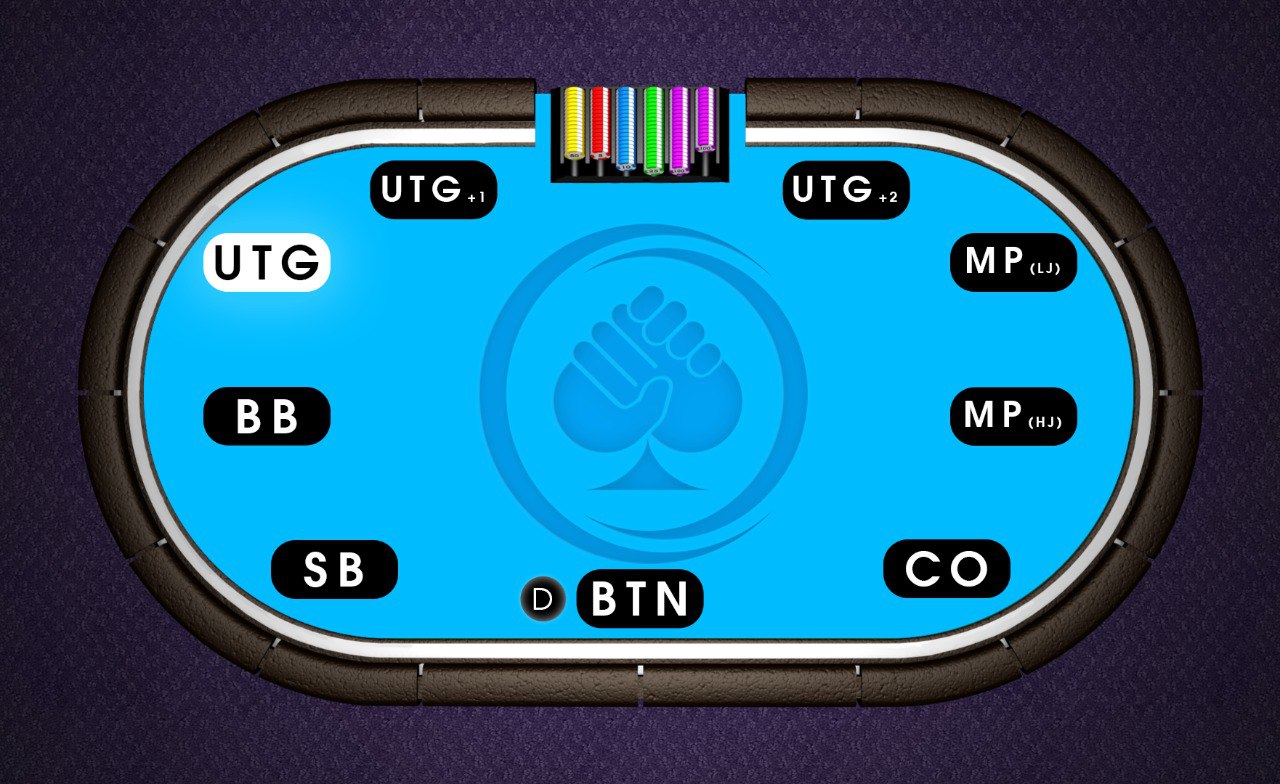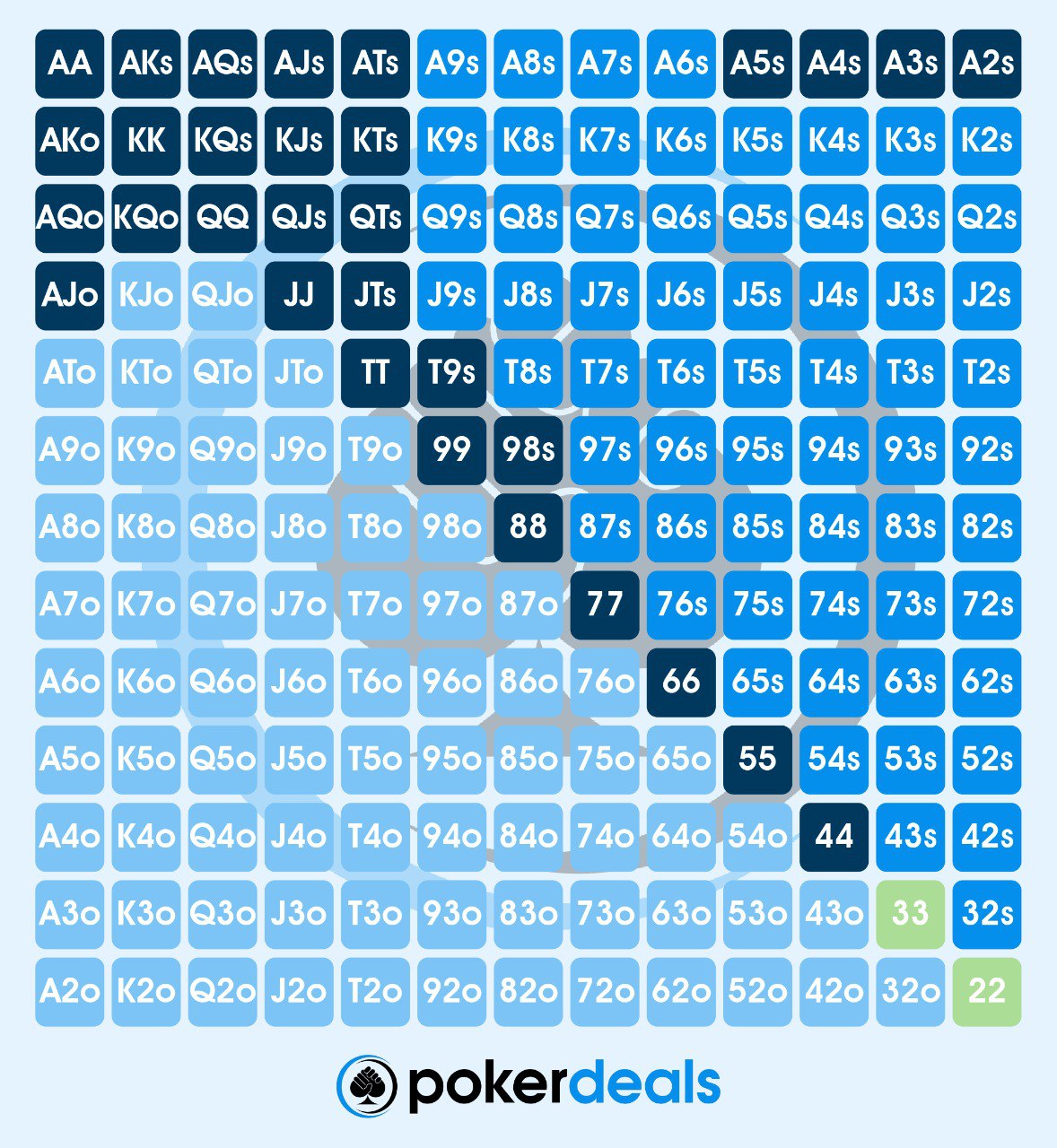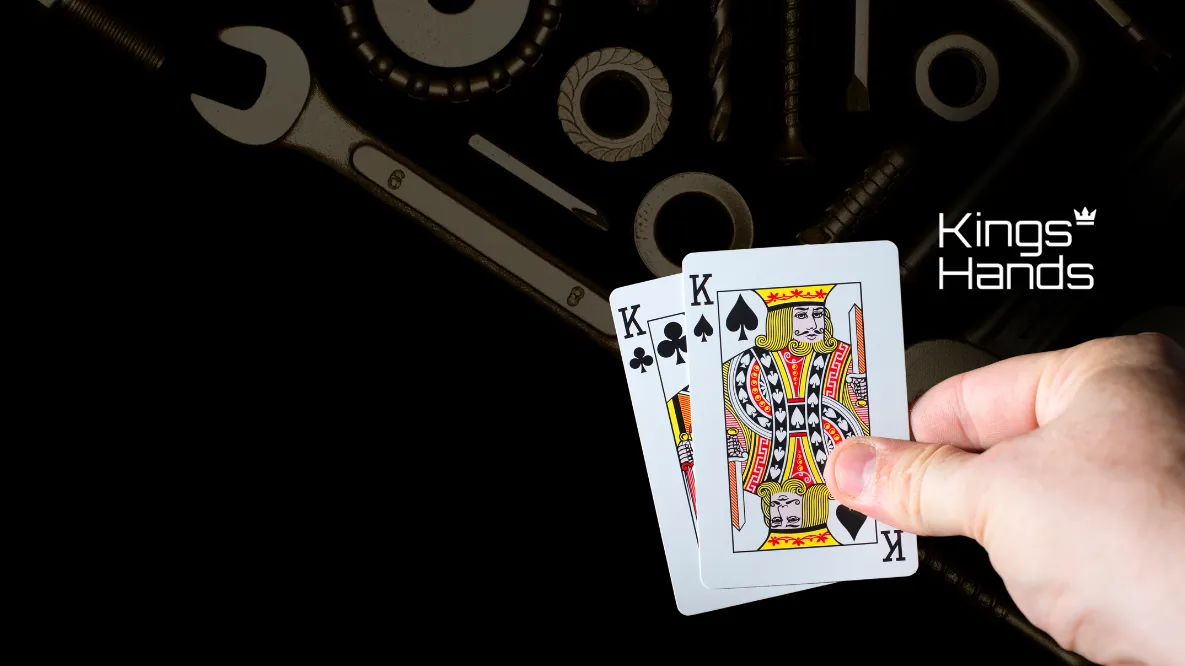In the first part of our preflop opening ranges series, we’ll be taking a look at one of the most misplayed positions at the table – under the gun. This is one of the hardest positions at the table for new players to get right, so where better to start our opening ranges series?
In this article, we’ll be taking a look at how you should be playing from under the gun, how you construct your opening range, and how you should adjust to a tight and loose table.
What is the Under The Gun Position?
The under the gun position is the more common name for the first preflop position. You’re seated to the direct left of the big blind, which means you’re first to act preflop.

How Should You Play From Under The Gun?
Being first to act preflop is a positional disadvantage, and you should adjust the way you play because of that. At a nine-handed table, there are eight other players at the table to act after you, all of which have a chance of having a strong hand. This means that we need to play a very tight range ourselves, as the chance of one of our opponents having a strong hand is just too high.
Plus, given our position relative to the button, we’re also likely to be out of position postflop. This is another disadvantage that we have to deal with, and another reason why we play such a tight range from under the gun.
Many beginners don’t understand just how tight you need to play from under the gun and end up putting too many hands in their opening range. If you play too wide, your opponents will exploit you preflop and postflop, and you’ll find it hard to be profitable.
How Do We Construct an Under The Gun Opening Range?
When constructing your under the gun opening range, you want to fill it with your very strongest hands. You want your range to have hands that can dominate rather than be dominated. This means that weak Ax hands are out the window, along with weak Kx and Qx hands.
Your range should mainly consist of pocket pairs, strong Ax hands, and strong, suited broadways. Many players don’t play offsuit broadway hands from under the gun, which shows you just how tight you have to play.
Some players will mix in suited connectors such as T9s and 89s, but it’s important not to go overboard when adding these hands into your range. They’re OK for board coverage, but if you start to add too many of these hands into your range it becomes too weak.
UTG Base Opening Range
At a nine-handed cash game table with 100bb, we recommend that your baseline under the gun range should look something like this:
13.73% – 44+, ATs+, A5s-A2s, KTs+, QTs+, JTs, T9s, 98s, 87s, AJo+, KQo

As you can see, the range mostly consists of strong Ax hands and pocket pairs. Hands like 22 and 33 are considered too weak to play from under the gun at a nine-handed table, as they have little postflop value. They’re hard to navigate postflop, and even if you flop a set, there’s a chance that you can be over-setted by your opponent and lose a massive pot.
You can also see that far more suited broadway hands make it into this range than off-suit broadway hands. But why is this the case? After all, the actual equity advantage of a suited hand is only a couple of percentage points! While that’s true, you’ll find that you’ll encounter more favourable flops that you can barrel on with suited hands compared to off-suit hands. Flopping a flush draw or backdoor flush draw that you can bluff with makes these hands more valuable, which is why we include more of them in our ranges.
Depending on your playing style, you can widen or tighten this range; but we wouldn’t recommend large adjustments. Add too many hands to this range, and your range becomes too weak, and your opponents can exploit you by calling wider and playing in position, or by 3betting you more aggressively. Similarly, if you take too many hands out of your calling range, your range becomes too tight, and your opponents won’t give you any action when you have a strong hand.
Adjusting Your Range
Now that we understand the baseline range you should be playing from under the gun, let’s take a look at how you can adjust it based on the players you’re playing against. After all, if you’re not adjusting to the tendencies of your opponent, you’re leaving money on the table! Below, we’ll take a look at how you should adjust your range when playing on a tight and loose table.
How You Should Adjust at a Tight Table?
When playing at a tight table, generally speaking, the best way to increase your win rate is to widen your raising range to steal the blinds more often. As players are playing too tight, they won’t defend the blinds enough, which means you’ll make more money with your preflop raises.
While this holds true when you’re playing under the gun, you can’t adjust your ranges as much as you could if you were playing from a later position. This is because when you’re under the gun you still have eight other players to act who could all have a strong hand. So, you can’t go raising 30% of your hands to steal the blinds more often, as you’ll find yourself running into strong hands too often.
When adjusting to a tight table, you should widen your range, but only by a couple of percentage points at most. Add in a couple more suited connectors and lower pocket pairs to widen your range and exploit the players who are playing too tight at your table.
How You Should Adjust at a Loose Table?
On the other hand, if you’re at a loose table, you want to be playing a strong range to take advantage of your opponents who are calling too wide. The good thing about playing from under the gun is that you’re already doing that! You’re already raising a strong, tight range filled with value hands that are going to dominate someone who is calling too wide.
If you want to try and maximally exploit your opponents, you can remove some of the lower-value hands from your range, such as the low, suited Ax and suited connectors, and only play hands that are going to be dominating your opponent’s range.
However, just playing your regular under the gun opening range is going to do well at a loose table. As long as you don’t overplay your hand postflop, you’ll often find yourself with the best hand when the money goes in.
Summary
Under the gun is a tough position to play because of how tight you need to be. It takes a lot of patience and discipline to play this tight, especially when playing live poker. However, playing a tight range is necessary to overcome the preflop and postflop disadvantages you face from this position, and is the only way to be a profitable player when playing under the gun.
Stay tuned for our next article on preflop opening ranges, where we’ll be covering the Under The Gun+1 position, by by following us on Facebook and Instagram.





















